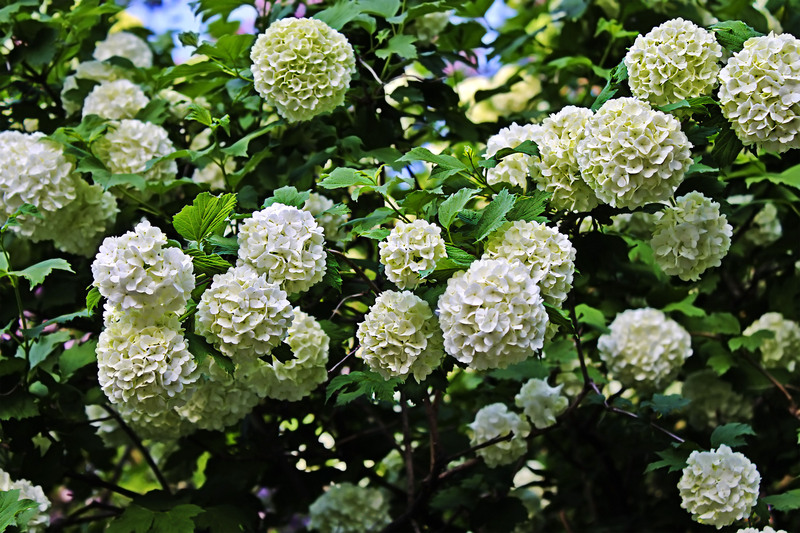Fostering Creativity in Child-Friendly Garden Spaces
Posted on 06/06/2025
Fostering Creativity in Child-Friendly Garden Spaces
Every child possesses a unique creative spark, waiting to blossom with the right environment and nurturing. Outdoor areas, particularly gardens, offer a world of opportunities for imaginative play and learning. Fostering creativity in child-friendly garden spaces is more than planting flowers--it's about cultivating curiosity, encouraging experimentation, and building lifelong memories. This comprehensive guide explores how to design, implement, and sustain stimulating garden spaces that awaken creativity in children.

Why Creativity Matters in Outdoor Learning Spaces
Creativity isn't just about art or music--it's about problem-solving, innovation, expression, and resilience. For growing minds, outdoor settings provide a flexible, stimulating backdrop where creativity takes root. The benefits of creative garden play for children include:
- Enhanced cognitive development
- Improved emotional well-being
- Physical coordination and confidence
- Social skills and teamwork
- Connection with nature and environmental stewardship
When you create a child-friendly outdoor garden, you're giving children a natural canvas to explore, imagine, and invent.
Key Elements of a Creative, Child-Friendly Garden Space
Garden spaces designed for children must go beyond pretty borders and neat lawns. The goal is to create dynamic, interactive environments that prompt curiosity and self-led discovery. Here are essential components for designing creative children's gardens:
Safety First: Secure, Accessible Layouts
- Install soft ground coverings (mulch, grass, sand) to cushion falls
- Ensure pathways are wide and smooth to accommodate all ages and abilities
- Remove toxic plants and avoid sharp tools
- Add seating areas for adults to supervise and participate
Engaging Sensory Features
- Use plants with varied textures, scents, and colors for sensory play
- Incorporate water features like shallow basins or mud kitchens--under supervision
- Place wind chimes, bird feeders, or butterfly habitats to attract wildlife
Spaces for Imagination and Role-Play
- Install secret hideaways--tipis, willow tunnels, or beanpole teepees
- Create open areas for games, storytelling, and performances
- Design thematic zones such as fairy gardens, dinosaur digs, or pirate coves
Hands-On Planting Zones
- Dedicate beds for child-grown vegetables, herbs, and flowers
- Set up raised planters, allowing easy access for little hands
- Offer child-sized gardening tools to foster independence and care
Strategies for Fostering Creativity in Outdoor Garden Spaces
Transforming a yard or balcony into a creativity-boosting children's space involves more than a one-time makeover. The following strategies will turn your garden into a vibrant learning laboratory:
Encourage Open-Ended Play
Provide versatile objects such as sticks, stones, logs, and fabric for children to manipulate and reinvent. Open-ended play materials stimulate inventive thinking and resourcefulness.
Offer Choice and Autonomy
Let children have a say in what is planted and where. Give them their own patch of soil or containers and let them select seeds. This ownership over the process nurtures creativity and responsibility.
Integrate Art into the Garden
- Outdoor easels or paint stations for nature-inspired art
- Mosaic stepping stones created from recycled materials
- Wind sculptures, mobiles, or decorated plant markers
Encourage Storytelling and Dramatic Play
Story corners, puppet theaters, or fairy-tale paths add a narrative element. Children can invent their own stories, fostering both language and creativity.
Host Science and Nature Exploration
- Create insect hotels or worm farms for close observation
- Provide magnifying glasses or bug catchers for hands-on learning
- Start a weather station to learn about seasons and climate
Creative Garden Activities for Children
To truly cultivate creativity in kid-friendly gardens, mix up activities that blend nature, art, science, and sensory experiences:
1. Nature Scavenger Hunts
- Make a list or cards with textures, shapes, or colors for children to find
- Encourage observation, discussion, and collection
2. Themed Gardening Projects
- Plant a "pizza garden" with tomatoes, basil, and peppers
- Create butterfly or bee gardens to observe pollinators up close
3. Creative Construction
- Build miniature houses or towns with natural materials
- Make "plant people" by growing grass or beans in decorated pots
4. DIY Outdoor Instruments
- Hang wind chimes or make drum areas with buckets and pots
- Explore rhythm, sound, and movement outside
5. Mud Play and Nature Art
- Let children draw with mud or create textured sculptures
- Arrange found leaves, sticks, and petals into mandalas or collages
6. Seasonal Celebrations
- Organize harvest festivals, flower parades, or spring planting parties
- Integrate crafts: lantern making, wreath crafting, or painting rocks
Tips for Maintaining an Inspiring Child-Centered Garden Space
Once your garden for children's creativity is established, ongoing care and evolution are crucial:
- Update plantings seasonally to maintain interest and learning opportunities
- Rotate loose parts and materials to prevent boredom
- Solicit children's input for new features or themes
- Involve kids in garden upkeep to instill pride and responsibility
- Embrace messiness--creativity thrives in spaces where children can experiment freely!
The Role of Adults in Supporting Outdoor Creativity
Parents, teachers, and caregivers are partners in the creative adventure. By modeling curiosity, asking open-ended questions, and co-exploring with children, adults reinforce a positive mindset towards experimentation:
- Be a co-learner, not just a supervisor; share your own discoveries
- Celebrate process over product--observe, listen, and encourage risk-taking
- Provide praise for effort and imagination, rather than perfection
Inclusivity and Accessibility in Child-Friendly Garden Design
Every child deserves a space to express their creativity. Adapt your creative garden spaces for children to be accessible to all:
- Incorporate raised beds or table gardens for children with mobility challenges
- Use sensory elements for children with visual or hearing impairments
- Offer shaded areas and seating for rest
- Provide clearly marked pathways and easy-to-reach water sources
Long-Term Benefits of Fostering Creativity in Garden Spaces
When you nurture creative experiences outside, the ripple effects extend far beyond the garden gate. Children who are encouraged to dream and build outdoors develop:
- Stronger problem-solving and critical thinking skills
- Enhanced self-confidence and emotional resilience
- Deepened curiosity about science, the environment, and the arts
- Greater appreciation for nature and sustainable living
- Lifelong memories and family bonds rooted in outdoor adventures

Conclusion: Cultivating the Next Generation of Innovators
Ultimately, fostering creativity in child-friendly garden spaces is about more than cultivating flowers and vegetables--it's about nurturing young minds, bodies, and spirits. By embracing imaginative design, hands-on activities, and inclusive approaches, you'll unlock endless possibilities for growth, discovery, and joy. Whether in a backyard, school yard, urban balcony, or community plot, creative gardens plant the seeds for lifelong curiosity and innovation. So gather your little gardeners, roll up your sleeves, and let your outdoor space become a living laboratory for wonder and creativity!
Frequently Asked Questions: Creative Garden Ideas for Children
- What is the best age to start children gardening?
Children as young as two or three can begin gardening tasks like watering and digging. Adjust tools and activities for age and ability. - How can I make a small outdoor space fun and creative for kids?
Use vertical gardening, hanging pots, and mobile planting boxes. Add compact sensory features like herb walls, pebble paths, and miniature fairy gardens. - Are there any recommended plants for children's gardens?
Opt for non-toxic, fast-growing, and sensory-rich plants like sunflowers, nasturtiums, lamb's ear, mint, cherry tomatoes, and snapdragons. - How can we keep children engaged throughout the year?
Plan seasonal activities: winter bird feeding, spring sowing, summer harvesting, and autumn crafts with leaves and seeds. - What's the most important thing when designing a creative garden for kids?
Balance safety, accessibility, open-ended play, and opportunities for hands-on learning. Let children help guide the design process!
Ready to start your own project? With the right approach, any garden can become an ever-evolving stage for expression, play, and creativity--where every child's imagination can truly blossom.

